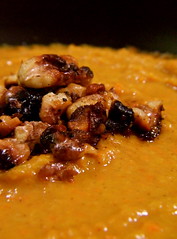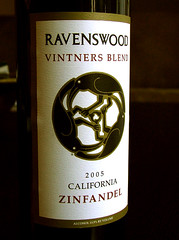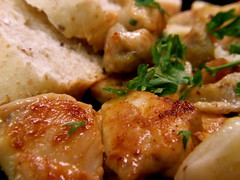Michael Ruhlman, noted author and Anthony Bourdain's arch on-screen enemy, has posted a brief note about a new documentary, King Corn. I've not paid much attention to corn in general, but I've tried to be more alert to high fructose corn syrup (which, it turns out, is in everything). From Ruhlman's description, though, the problem goes much deeper than that:
It sounds like an excellent movie, taking a very small, very real look at two guys' efforts to grow corn and make corn syrup and using that approachable situation to shed light on a much larger picture. Ruhlman maintains the real tragedy is that people eating this food won't get to see the movie--and probably wouldn't go even if it came to their towns. I agree. But more tragic than that is people's inability to buy anything healthier.It’s an excellent and entertaining reminder of what Pollan describes in Omnivore’s Dilemma (Pollan’s work inspired the film and he’s interviewed as well): that we are walking, breathing corn. The film makers (above) buy an acre in Iowa to get hands on experience of America’s most important crop. And also its scariest. We grow a single strain designed to thrive in close quarters (urban corn); it costs more money to grow than it’s worth and you can’t eat it.
I worked for a company that went bankrupt just before 9/11. After 9/11 the job market was incredibly soft. I bounced to a couple consulting gigs, but even those were few and far between. With one salary between us (bless her heart, my wife--to be, at the time--drove a two-hour commute every day to keep us fed), we had to hunt for bargains. I realized inexpensive food fell into one of three categories: easy to make, hours to make, or required specialized knowledge. The people who won't see King Corn probably don't have the time or money necessary to eat healthier, whether they know about it or not.



 The succulent nature of this dish and the somewhat heavy flavor of the chicken skin and garlic call for a well-structured wine with good tannins. Espelt Wineries’ 2005 Sauló (an organic wine made from garnacha and carinena varietasl) is a shining example of just such a wine.
The succulent nature of this dish and the somewhat heavy flavor of the chicken skin and garlic call for a well-structured wine with good tannins. Espelt Wineries’ 2005 Sauló (an organic wine made from garnacha and carinena varietasl) is a shining example of just such a wine.


